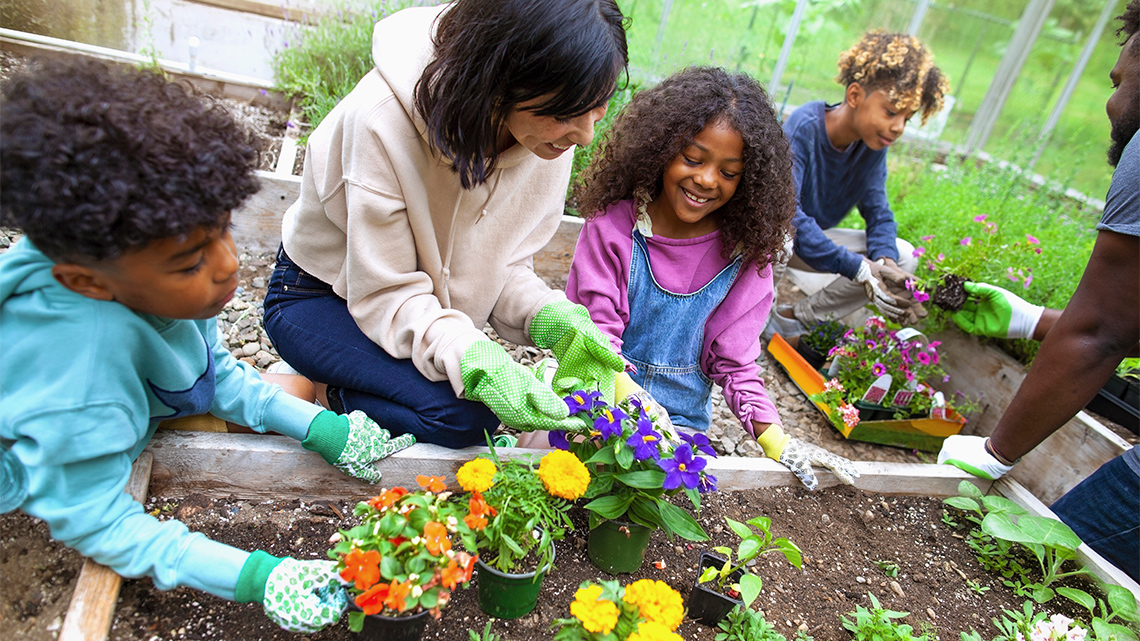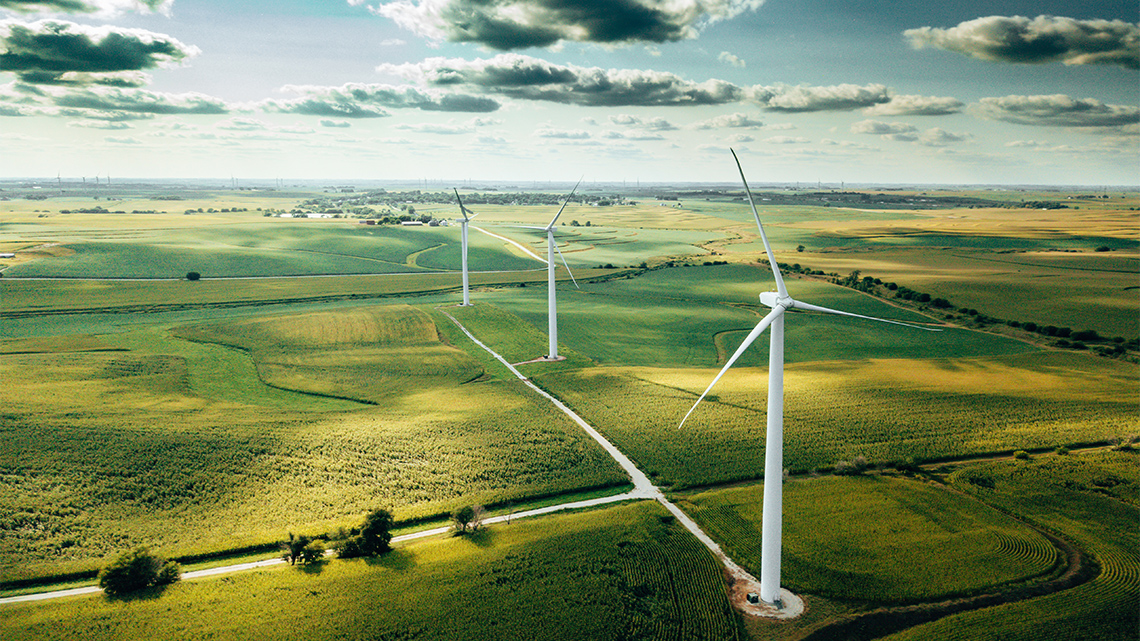Minds On
Basic human needs

Student Success
Think!
If possible, with a partner, consider the following questions:
- What are people’s basic human needs?
- Do all people have the same needs?
- Will a person living 100 years from now have the same needs as they do today?
- What are our roles and responsibilities in taking care of Earth?
Record your thoughts in a notebook or another method of your choice.
If possible, share and discuss your ideas with a partner.
Note to teachers: See your teacher guide for collaboration tools, ideas and suggestions.
Action
What is sustainability?
Sustainability is the ability to satisfy basic human needs. It also depends on having access to the Earth’s resources.
For example, all humans need access to water, food, and breathable air to survive. Since humans living 100 years from now will have those same resource dependencies, it is crucial to consider sustainability in any discussion about human needs.
Sustainability is a process that can be maintained without interruption, weakening, or loss of valued qualities. Sustainability ensures that a population remains within the carrying capacity of its environment.
Explore the following images and consider what the term “sustainability” means to you:
Brainstorm
Brainstorm
Brainstorm and describe what the term “sustainability” means to you.
Record your ideas in a notebook or another method of your choice.
If possible, discuss your ideas with a partner
Global connection
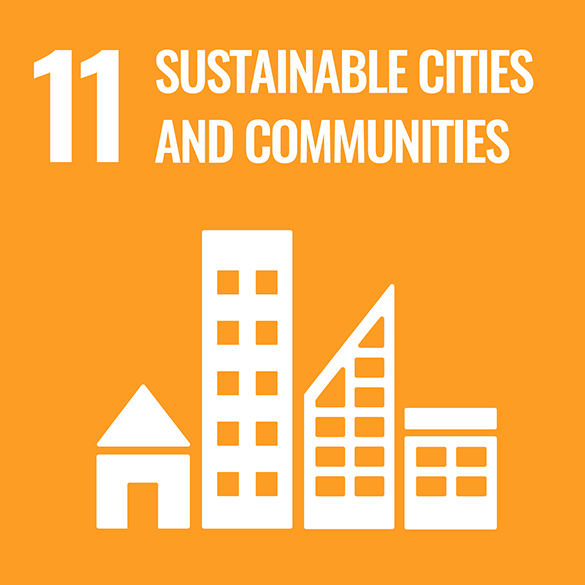
The United Nations (UN) is a group of many countries from around the world that have come together to create a better future for people and the environment. They have created 17 goals called the Sustainable Development Goals.
This learning activity is connected to Goal #11: Sustainable Cities and Communities. This means that our cities and communities should be inclusive, safe, resilient, and sustainable. Communities that are not sustainable can lead to pollution, unrest, insecurity, lack of economic growth, and more.
To learn more about all of the UN Sustainable Development Goals and why they were created, press the following tab to access the video called “The World’s Largest Lesson”.
UN Sustainable Development Goals
Let’s explore the following conversation between Teacher A and B about Goal #11.
This is a conversation between Teacher A and Teacher B. Teacher A: Sustainability is clearly an important topic, Teacher B. Teacher B: So important that it inspired this global United Nations initiative! Teacher A: Good point! But I don’t really understand the specific connection to cities. Can you explain it more? Teacher B: Absolutely, Teacher A! From the beginning of civilization, humans have sought opportunities to live in larger communities. Today, over half of the world’s population lives in cities, and this number is continuing to rise. Teacher A: That makes sense. Cities can offer greater job opportunities, better access to healthcare, more options for pursuing education, and improved access to social services! Teacher B: That’s true, but the sustainability concern is that as these communities and developments continue to grow, especially in coastal areas, they become vulnerable to climate change and natural disasters due to their location and density. Teacher A: Oh, that is concerning! So, the purpose of UN Goal 11 is to figure out how to make cities more sustainable? Teacher B: You’ve got it, Teacher A. The goal includes targets like ensuring everyone has access to safe housing and basic services; providing safe transportation that is not harmful to the environment; ensuring members of the community are engaged in discussions about sustainability; and protecting national and cultural heritage during the process. Teacher A: Do these targets also address waste management and air quality? I would imagine those would be important factors to keep track of. Teacher B: You bet! And the UN provides specific financial and technical assistance to countries with greater developmental needs. Teacher A: Thanks, Teacher B. I can really identify the important role that sustainability plays in developing cities and communities now.
Pause and Reflect
Pause and reflect
After exploring the conversation about sustainability between Teacher A and Teacher B, let’s reflect on the following questions:
- Based on what you’ve learned so far, why do you think sustainability is one of the UN goals?
- What questions do you still have?
Record your ideas in a notebook or another method of your choice.
Indigenous perspectives
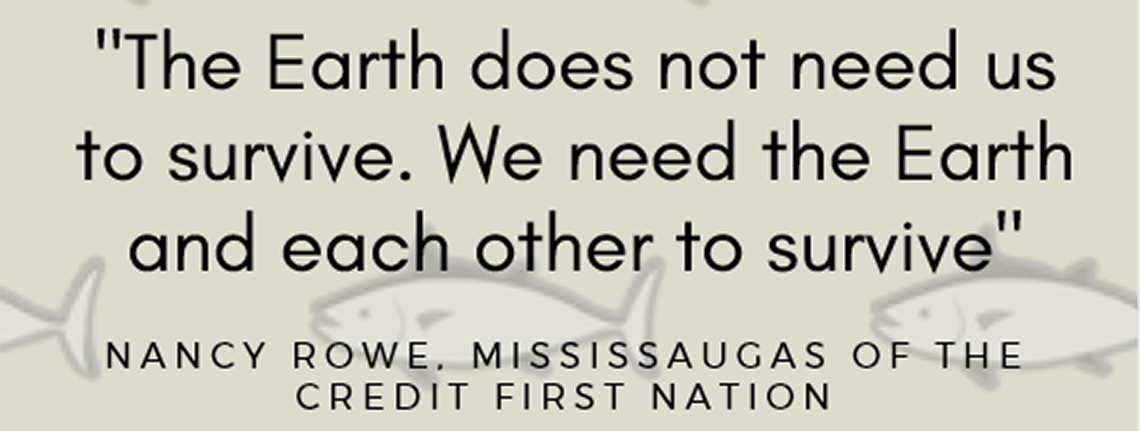
This quotation by Nancy Rowe says, “The Earth does not need us to survive. We need the Earth and each other to survive.” Nancy is a member of the Mississaugas of the Credit First Nation and director of the learning initiative, Akinomaagaye Gaamik.
Indigenous peoples traditionally are caretakers of Mother Earth. They believe that the Earth gives the world the gifts of water, fire, and air – the necessities for life and survival. Thus, Indigenous knowledges are grounded in the belief that humans must have a reciprocal relationship with the Earth and all living things on it.
Press ‘Let’s Check!’ to access more details.
A reciprocal relationship is describing an agreement or obligation bearing on or binding two parties equally.
Indigenous peoples have always practised sustainability in their traditional territories.
For example, they carefully harvest and only take what they need, so that the resource can continue to regenerate itself. This harvesting protected the health and well-being of the community and the health of the environment for future generations.
The Philosophy of Spirit of Land according to the Haudenosaunee teachings, presented by Rick Hill (Tuscarora, Six Nations), is that:
- “The Earth is alive, with powers of regeneration.”
- “Humans are made from the clay of Mother Earth.”
- “Plants, trees, animals, birds, and reptiles are also made from that clay.”
- “All life forms have a living spirit.”
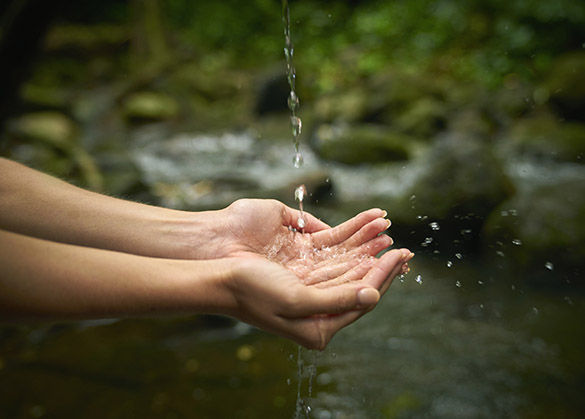
Though each nation and community have their own teachings around traditional ecological knowledge, it is commonly understood that all of the elements in the universe are connected and are all dependent on one another for life.
Humans are not superior to any other living part of the Earth. And as humans, we have a role and responsibility to take care of the Earth, not just for this generation, but also future generations as well.
Two-eyed seeing
“Etuaptmumk is the Mi’kmaw word for Two-Eyed Seeing. We often explain Etuaptmumk - Two-Eyed Seeing by saying it refers to learning to see from one eye with the strengths of Indigenous knowledges and ways of knowing, and from the other eye with the strengths of Western knowledges and ways of knowing … and learning to use both these eyes together, for the benefit of all.”
- Mi’kmaw Elder Albert Marshall
Mi’kmaw Elder Albert Marshall developed the guiding principle of Two-Eyed Seeing to describe how Western and Indigenous knowledges and perspectives can work together to explore a bigger picture and create innovative solutions.
By considering multiple perspectives, we not only help solve issues in our individual lives, but it can also improve our collective relationship to the Earth. Indigenous knowledges, perspectives, and innovations can create a more sustainable future for all!
Access this video entitled “Can Indigenous Knowing Help Solve Climate Change” to learn more about different perspectives on climate change.
Let’s explore with Melanie Goodchild, a research fellow and a member of Biigtigong Nishnaabeg First Nation in Northern Ontario, about various perspectives on climate change.
After exploring the video, consider the Indigenous knowledges and perspectives shared, as well as the knowledge and perspectives shared by Western science.
Complete the Indigenous and Western Perspectives on Climate Change in your notebook or using the following fillable and printable document. If you would like, you can use speech-to-text or audio recording tools to record your thoughts.

Press the Activity button to access Indigenous and Western Perspectives on Climate Change.
Activity (Open PDF in a new tab)After completing a compare and contrast on the various perspectives, consider how Two-Eyed Seeing can help solve world issues, such as climate change.
What benefits can come from Indigenous and Western knowledges and scientists working together?
Record your ideas in a notebook or another method of your choice.
“Water protectors talk about the spirit of water and that you need to protect that spirit. And it’s because we believe that those are a gift and that we need to have a reciprocal relationship with those gifts and appreciate them, instead of looking at them purely as ecological services.”
- Melanie Goodchild, research fellow and member of Biigtigong Nishnaabeg First Nation in Northern Ontario
Connections
Connections
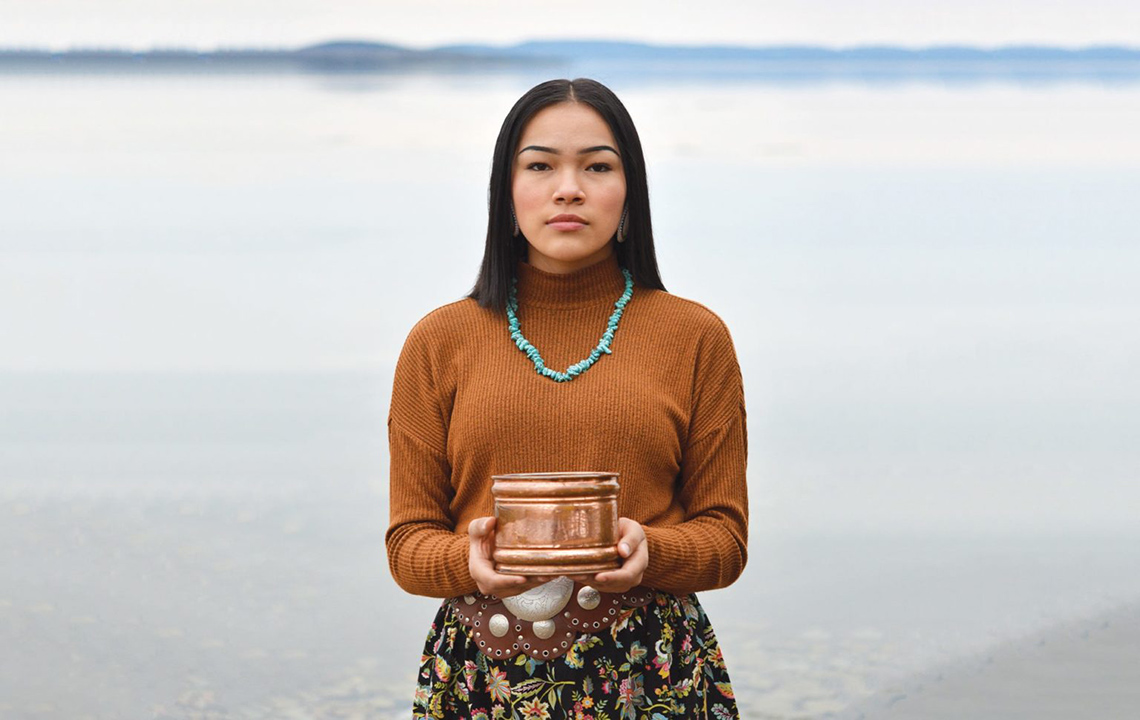
Autumn Peltier
Autumn Peltier is an environmental activist and chief water commissioner for the Anishinabek Nation, who speaks on the importance of protecting fresh water. She is from Wikwemikong Unceded Territory, a First Nation on Manitoulin Island.
Autumn has been nominated three years in a row for the Children’s Peace Prize, and in 2019 she was the only Canadian on BBC’s list of the 100 most influential women. In 2016, Autumn (famously) confronted the Prime Minister about his failure to protect Indigenous people’s water. In an interview with Canadian Geographic, Autumn outlined that water is a sacred element that must be sustained throughout the future.
Based on what you’ve learned so far, how can Indigenous knowledge and perspectives create a more sustainable future?
Record your thoughts and ideas in a notebook or another method of your choice.
Consolidation
Sharing my learning

Let’s share what we’ve learned about sustainability and how Two-Eyed Seeing can help create a better collective future.
You may present your learning in a short blog post, description, or another method of your choice.
Press ‘Hint’ to access more details.
What is a blog post?
A blog post is a digital format used to inform an audience about a topic that is important. The author of a blog post shares their understanding on a topic.
Check out the following checklists to guide your presentation:
Before choosing your method of presentation, consider:
Be sure that your presentation includes:
Reflection
As you read the following descriptions, select the one that best describes your current understanding of the learning in this activity. Press the corresponding button once you have made your choice.
I feel…
Now, expand on your ideas by recording your thoughts using a voice recorder, speech-to-text, or writing tool.
When you review your notes on this learning activity later, reflect on whether you would select a different description based on your further review of the material in this learning activity.
